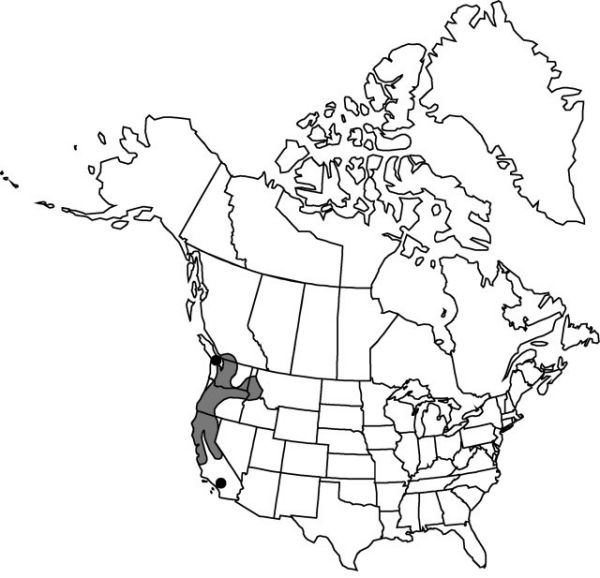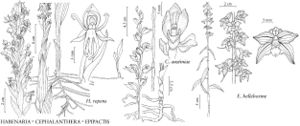familyOrchidaceae
subfamilyOrchidaceae subfam. Epidendroideae
genusCephalanthera
speciesCephalanthera austiniae
Cephalanthera austiniae
Cat. N. Amer. Pl. ed. 2, 4. 1900.
Common names: Phantom orchid snow orchid
IllustratedEndemic
Basionym: Chloraea austiniae A. Gray Proc. Amer. Acad. Arts 12: 83. 1877 (as austinae)
Synonyms: Eburophyton austiniae (A. Gray) A. Heller
Treatment appears in FNA Volume 26. Treatment on page 584.
Revision as of 22:12, 5 November 2020 by imported>Volume Importer
Plants pure white, 19–65 cm. Leaves proximally reduced to scarious sheathing bracts, to 10 cm, distally reduced to bracts, pure white, becoming brown. Inflorescences: floral bracts scarious, the proximal often foliaceous, distal usually reduced, lanceolate, apex acuminate. Flowers ascending, loosely open orbs, white with yellow markings; sepals lance-elliptic, 12–20 × 4–7 mm, base spread, curving forward to meet but not touch, apex obtuse to subacute; petals oblanceolate, arcuate, 10–17 × 3–6 mm, associated with dorsal sepal; lip 8–12 × 9–14 mm, lateral lobes flanking column, distal end deflexed, yellow centrally. Capsules erect, ellipsoid-oblanceoloid, 15 × 10 mm.
Phenology: Flowering summer.
Habitat: Mineral soil in dry to moist coniferous forests
Elevation: 0–2200 m
Distribution

B.C., Calif., Idaho, Oreg., Wash.
Discussion
Selected References
None.
Lower Taxa
None.
